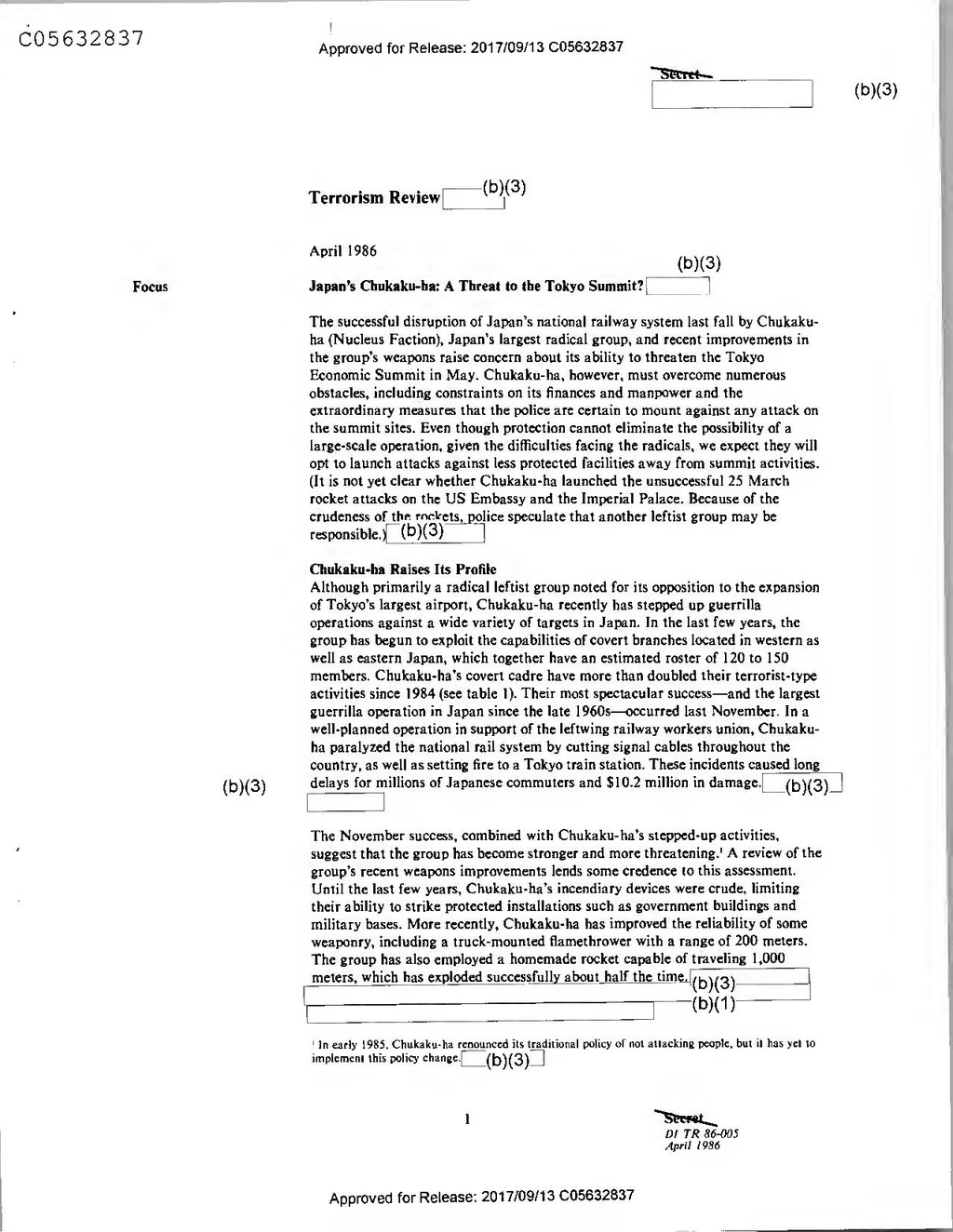Secret
(b)(3)
(b)(3)
Terrorism Review
b )
April 1986
(b)(3)
Focus
Japan's Chukaku-ha: A Threat to the Tokyo Summit?
The successfUL disruption of Japan's national railway system last fall by Chukakuha (Nucleus Faction), Japan's largest radical group, and recent improvements in the group's weapons raise concern about its ability to threaten the Tokyo Economic Summit in May. Chukaku-ha, however, must overcome numerous obstacles, including constraints on its finances and manpower and the extraordinary measures that the police are certain to mount against any attack on the summit sites. Even though protection cannot eliminate the possibility of a large-scale operation, given the difficulties facing the radicals, we expect they will opt to launch attacks against less protected facilities away from summit activities. (It is not yet clear whether Chukaku-ha launched the unsuccessfUL 25 March rocket attacks on the US Embassy and the Imperial Palace. Because of the crudeness of the rockets, police speculate that another leftist group may be responsible.)(b)(3)
Chukaku-ha Raises Its Profile Although primarily a radical leftist group noted for its opposition to the expansion of Tokyo's largest airport, Chukaku-ha recently has stepped up guerrilla operations against a wide variety of targets in Japan. In the last few years, the group has begun to exploit the capabilities of covert branches located in western as well as eastern Japan, which together have an estimated roster of 120 to 150 members. Chukaku-ha's covert cadre have more than doubled their terrorist-type activities since 1984 (see table 1). Their most spectacular success—and the largest guerrilla operation in Japan since the late 1960s-occurred last November. In a well-planned operation in support of the leftwing railway workers union, Chukakuha paralyzed the national rail system by cutting signal cables throughout the country, as well as setting fire to a Tokyo train station. These incidents caused long delays for millions of Japanese commuters and $10.2 million in damage.__(b)(3).
(b)(3)
The November success, combined with Chukaku-ha's stepped-up activities, suggest that the group has become stronger and more threatening.' A review of the group's recent weapons improvements lends some credence to this assessment. Until the last few years, Chukaku-ha's incendiary devices were crude, limiting their ability to strike protected installations such as government buildings and military bases. More recently, Chukaku-ha has improved the reliability of some weaponry, including a truck-mounted flamethrower with a range of 200 meters. The group has also employed a homemade rocket capable of traveling 1,000
meters, which has exploded successfully about half the time. (b)(3)
(b)(1)
In early 1985, Chukaku-ha renounced its traditional policy of not atlacking people, but it has yel to implement this policy change. (b)(3)
Secret
DI TR 86-005 April 1986
Approved for Release: 2017/09/13 C05632837
